Eduard Galeyev: ''CSA is not the only means against ageing of Russia's generating capacities''
The director general of TGC-16 about problems of tariff growth, heat supply reform and Capacity Supply Agreement (CSA) programme extension
Eduard Galeyev, who previously worked as director of the Regional Dispatching Office of Tatarstan, headed the energy company TGC-16 nearly two years ago. Over this time, the company implemented a significant project not only for the republic, but also for the whole country — it launched a unique power unit with a capacity of 400 MW at Kazan CHPP-3. Realnoe Vremya decided to learn from the new chief about other results the company has achieved. Eduard Galeyev told about the changes at the stations, the new operating mode and the reformation of the industry in the interview.
''TGC-16's tariffs were and continue to be lower than Tatenergo's''
Mr Galeyev, it has been almost two years since you have become the head of TGC-16. What results have you and TGC-16 achieved over this period?
This period has been very busy and quite successful for TGC-16. We accomplished the year 2017 with the revenue of more than 2bn rubles. I consider these results very good, especially taking into account the fact that our tariffs for heat remain the lowest in Tatarstan. Paradoxically, it has been already eight years since the establishment of TGC-16, but our tariffs still remain at the same level as industrial enterprises of the republic purchased heat from Tatenergo even before 2010, and they remain the lowest in the region.
Low tariffs allowed our consumers to ramp up the production and, accordingly, to increase energy consumption. If we talk about TAIF Group, energy consumption increase goes amid energy-efficiency measures regularly implemented by the group. The production is improved, consumption indices for energy consumption are reduced, heat losses through the thermal insulation of heating main are reduced. Nevertheless, the heat supply to consumers with exhaust steam from steam turbines has increased by more than 25% over the years at TGC-16's stations. This has become possible due to that the heat supply at existing production facilities of industrial enterprises has increased, new installations have been put into operation, the production of necessary thermal energy has been fully transferred to Kazan CHPP-3. Own boiler houses of the companies were terminated and frozen.
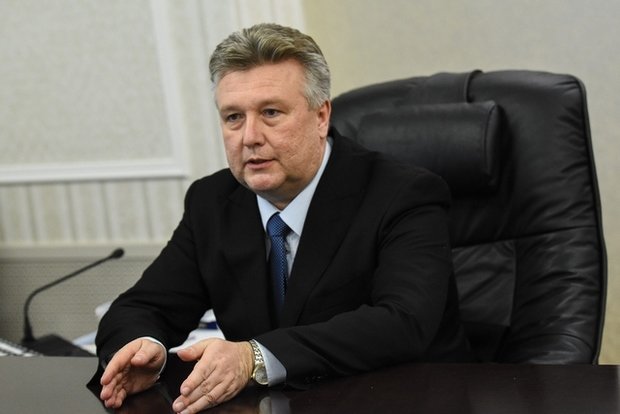
Low tariffs allowed our consumers to ramp up the production and, accordingly, to increase energy consumption
Despite some difficulties, the year 2017 was still a breakthrough year for the company. The gas turbine unit (GTU) launched in the summer has become an important milestone for TGC-16, and, of course, for the energy of Tatarstan. How is the turbine working now?
The first half of 2017 was marked for our entire team by the completion of the project for the gas turbine plant's construction at KCHPP-3. We invested a lot of effort and energy in this project. Jointly with General Electric (our general contractor) we completed the construction of the power unit, put it into commercial operation in the scheduled time and demonstrated the desired results. Moreover, according to the test results, we achieved the parameters of the power unit above the contracted ones. Instead of 389 MW specified in the contract, the gas turbine support an average load of 405 MW. In the process of adjustment under appropriate ambient temperatures, the power of the gas turbine reached 425 MW. What is gratifying, technical and economic parameters of the GTU are stable and meet all the standards and specifications, and the efficiency factor of the combined heat and power production reaches 85%.
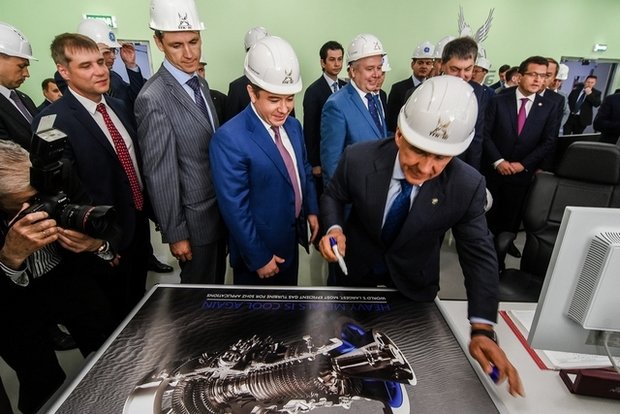
The first half of 2017 was marked for our entire team by the completion of the project for the gas turbine plant's construction at KCHPP-3
Frankly speaking, I must confess that we had a certain anxiety about the project. Usually, according to the experience of our counterparts from other energy companies, when such complex equipment is introduced, especially completely new one, there is a long period of its integration and adjustment, there are a lot of emergency shutoffs and failures. I do not want to jinx it, but the period of 'childhood diseases' of our power unit was quite short. Now the machine works reliably. It is a tribute to GE, our unit is under constant maintenance of the engineering centre of the company, any questions and problems are immediately considered round the clock seven days a week, and recommendations to solve them are given in the shortest possible time. Moreover, we get a lot of recommendations ahead of the curve to work proactively on preventing emergency situations. To do this, it has been installed a specially developed software and technical complex of predictive analytics, which is part of Predix platform, the newly developed by GE within the concept of Industry 4.0. Now we are already thinking out how to improve further our machine to prevent capacity loss in hot weather. We hope to receive concrete proposals from GE by the end of April. Besides, in the long run it is planned to upgrade the flow range of the turbine to increase the installed capacity and efficiency of the gas turbine.
Electricity generation has increased almost threefold
It has been many disputes among representatives of energy industry that such projects cannot be repaid without additional support mechanisms. In particular, without the CSA programme (Capacity Supply Agreement is a special non-market mechanism designed to introduce new generation facilities. It implies conclusion of agency contracts between suppliers and buyers. Concluding the contract, the supplier undertakes to construct and put into operation new generating facilities. In turn, the supplier is guaranteed the compensation of costs for the construction of generating facilities through the increased cost of power, which is paid by the consumer – editor's note). How did you manage to reach this?
Indeed, many colleagues ask us the questions, ''Why did you need to get involved in it?'' and ''How are you going to repay the project?'' Everything here is quite clear and transparent. Before entering the project, serious work had been carried out to optimize the technological scheme of the new power unit, to integrate it with the existing station, as well as to optimize the cost of its construction. This was important to ensure that the introduction of the new equipment was not an excessive burden on the consumers of heat, as well as to optimize the cost of its creation. Negotiations with potential contractors went not easy, but we managed to find mutually acceptable parameters of the contract. So we got a good price. The unit cost of our project was 535 euros per kilowatt. It is taking into account the interest rate at investment phase and the cost of scheme of power distribution. This became possible thanks to the careful planning of the investment project. As our counterparts from other energy systems joke, the project cost of the gas turbine at KCHPP-3 is 'obscenely low'.
Besides, it is no secret that a very large share of the costs for operation of power units with GTU is the cost of their maintenance and repair. Therefore, at the stage of contract negotiations on EPC contract (EPC – a turnkey construction – editor's note), it was immediately decided to determine the cost of the service. As a result, we managed to reach an agreement and fix the cost and volume of the service of the gas turbine for the next 10 years at the optimal level for us and the general contractor. At the same time, we could convince our partners that all modifications of the equipment and parts, which need to be carried out on the GTU to ensure its reliability, are carried out at the expense of the contractor during the guarantee period. With that, the contractor guarantees the reliability of the gas turbine. All this allowed to optimize the cost of the life cycle of the GTU and the cost of its maintenance significantly. As a result, we received the rates of return of the project acceptable to the shareholder of the company.
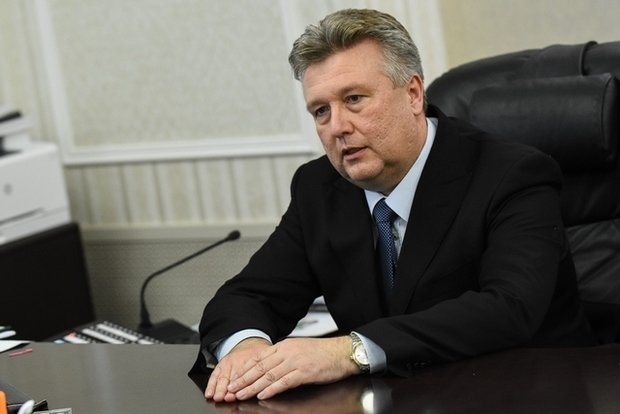
If we were late with the launch and implementation of this project, the situation at CHPP-3 would be very difficult
More than six months have passed since the launch of the turbine. How has the work of the station changed over this period?
Already now we can say that in 2017 we generated two and a half times more electricity at Kazan CHPP-3 than in the same period of 2016. What is more, this is against the background of about the same supply of heat from Kazan CHPP-3 as last year. Unfortunately, we have not been able to increase the supply of hot water to the population of Kazan to at least 1,5 million Gcal per year yet, like it was a few years ago. Despite this negative factor, the efficiency of our plant has improved by more than 30%. Thus, the specific consumption of conventional fuel for electricity supply in total at the station (the amount of fuel burned to produce one kilowatt-hour of electricity — editor's note) at the end of 2016 amounted to 310 grams per kilowatt-hour, and now we have 244 g/kWh in total last year. The average annual specific consumption of the gas turbine itself is about 156 g/kWh. It is despite the fact that the turbine has been in commercial operation from June 1. We hope that our results will be even better this year.
I would like to note that if we were late with the launch and implementation of this project, the situation at CHPP-3 would be very difficult. The thing is that electricity prices in the wholesale electricity market have not been rising for the last couple of years, even against the backdrop of rising fuel prices, in 2017 they even fell significantly. This is due to the introduction of new effective capacities in the Russian energy system, the transition of energy companies to the physical method of cost-sharing in the formation of the cost of thermal and electrical energy, as well as with long period of high water in 2017. High water period was long and the summer was rainy, so the large inflow of rivers of the Kama-Volga basin actually ended only in August. Due to this, the market increased the share of electricity from hydropower plants. As a result, in the wholesale market, the price of electricity in this period decreased by an average of 100 rubles per MWh. It is worth saying that to date there's nothing to be done with specific costs for the supply of electricity above 300 g/kWh in the wholesale power market, and it would difficult to compete in the electricity market without the high-performance generating capacity of KCHPP-3.
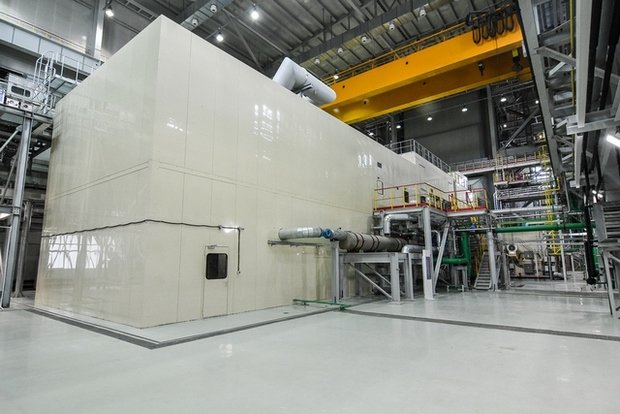
The average annual specific consumption of the gas turbine itself is about 156 g/ kWh, and it is despite the fact that the turbine has been in commercial operation from June 1
Since we are talking about the efficiency of CHP, I cannot help but ask how do you see the reform of heat supply?
I have always been close to this topic, as well as issues of electricity production. Working in the dispatching service of Tatarstan energy system, we were engaged in planning of operating modes of power plants taking into account their supply of heat as the task of the Regional Dispatching Office is just to provide the maximum power generation in the mixed mode. Naturally, it significantly depends on including correctly made scheme of distribution of thermal loads of the heating system between power plants and the hydraulic mode of heat networks, the optimal ratio of temperatures of direct and reverse heating systems.
Now, in my opinion, there are taking place tectonic shifts in the legislation on heat supply. On the one hand, they should ensure transparency of pricing, but at the same time, they bear certain risks. We can already see the correctness of our concerns on the example of the situation with the loading of CHPP-3 in Kazan, when the united heat supply organization (ETO), in fact, using its dominant position, is engaged in arbitrariness and allows itself to break the law, loading its own boilers instead of the source with combined heat and power generation, where the tariff is by 30% lower at least. In this regard, among other things, in each particular case, in each particular municipality it is important to find exactly the scheme of interaction of ETO with other participants of the heat supply market so that market conditions are formed without any manual control.
If we take, for example, Kazan, it is important to find a scheme of interaction of players of the thermal market in principle excluding conflicts like the current one. In my understanding and understanding of my colleagues, the division of heat energy production and transportation activities in Kazan, similar to those adopted in the electric power industry, could be the best solution. In other words, heating networks should be included in a separate company, with a significant share of ownership in the municipality, which will ultimately be responsible for the quality of heat supply to its residents. And heat generating companies will compete to sell heat from their heat sources at the best rates. Then the mechanisms of optimization of their structure, shutdowns of excess and outdated power capacities, boiler houses and so on will begin to work immediately.
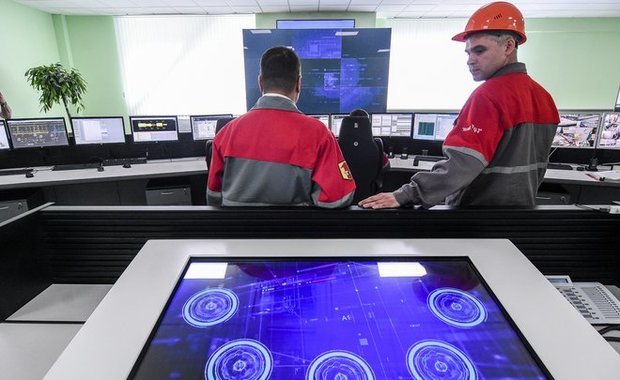
The division of heat energy production and transportation activities in Kazan, similar to those adopted in the electric power industry, could be the best solution
Moreover, it will allow to expand district heating grids through their consolidation with local isolated grids. Plus, a huge number of boiler houses will be taken out of service as the heating network company will be interested in developing heat networks and increasing purchases of heat from cheaper heat sources. It is very important to develop mechanisms that would strictly obligate ETO to fulfill obligations for the development of heating system, to carry out investment programmes. It is necessary that ETO developed thermal networks. It is important in order to increase the load of power plants and to maximize it. The role of both municipal authorities and the Federal Antimonopoly Service is important. By May-June, all the necessary bylaws should be issued. The united heat-supplying organization, which will receive huge powers after transition to new pricing on the principle of alternative boiler house, is also to get a huge layer of the duties defined by the updated scheme of heat supply. It is necessary to understand that the status of the united heat-supplying organization imposes on you a certain level of responsibility, not only give benefits.
''CSA is not the only way''
Mr Galeyev, you have long worked in the Reginal Dispatching Office of Tatarstan. Now you are the head of the company that supplies heat and electricity to large industrial enterprises of the republic. In this regard, it would be interesting to know your opinion on the CSA-2 programme coming in the energy sector. How would you assess it?
The Russian power industry needs to renew its capacity. This is not to argue. The only question is what mechanisms are being created for this update. It is no secret that under the first CSA programme, many power facilities were built in those places where they were not actually needed. The second programme should take into account these mistakes and to prevent them.
The main problem of CSA-1 was that it was completely cut off from the market of thermal energy. As a result, generating capacities were constructed including in those places where there is actually no demand both for electric energy and heat. Now these modern blocks are idle or underutilized. According to the council of electricity consumers, a quarter of the power units built under the CSA-1 programme has an installed capacity utilization factor less than 40%! Besides, the cost of projects turned out to be very high. The reason is that CSA did not determine marginal costs of projects, it defined only comfortable for generating companies specific indicators of the cost of construction per kilowatt of installed capacity and power tariffs, more than defraying all possible and impossible costs. All this has was a huge burden on the consumer. Besides, various additional power tariffs are constantly being introduced: for the construction of generating capacities in Crimea, Kaliningrad, the Far East, for the development of wind turbines and the construction of incinerators. Naturally, now consumers are wary of any additional programme on modernization of generating capacities, especially with the abbreviation CSA.
From the point of view of energy producers and officials, the logic is clear. They already have a proven mechanism that only needs a little to be amended, and then run. And there will be no problems. But the peculiarity is that now the conditions necessary to participate in the CSA programme are radically different from those that were in the first programme.
What is the difference?
First of all, we are talking about the modernization of existing demanded capacities. Moreover, we are talking about modernization with the use of Russian technologies. The payback period of projects should be from 15 to 20 years. Meanwhile, it is mainly meant to upgrade obsolete and spent equipment of steam power cycle or, in other words, steam turbines and power boilers. The construction of new facilities using the technology of combined cycle is practically not provided. This is primarily due to the fact that we do not produce powerful, reliable and efficient gas turbines in Russia. The only exception is the joint venture with General Electric to assemble 76 MW 6FA turbine and the licensed production facility with Siemens of SGT-2000 E turbines with a capacity of 160-180 MW. But due to certain foreign policy problems, there are also restrictions on the use of these technologies.
It turns out that we have to upgrade only steam turbines and boilers that were installed many years ago. That is, to ensure the functioning of obsolete equipment for another 20 years. In fact, this will lead to freezing of the existing scientific and technical development and efficiency of Russian energy sector. In Tatarstan, the example of Zainsk GRES is illustrative. In 2017, the average annual indicator of specific consumption of equivalent fuel for electricity generation in Russia fell below 300 g/kWh. At Zainsk GRES, for blocks with a pressure of 130 atmospheres the most effective average annual indicator of specific fuel consumption cannot be lower than 340 g/kWh. The decisions on upgrades being offered by our and foreign plants without installing GTU theoretically will help to reduce the indicators of Zainsk GRES to 320 g/kWh. It turns out that the station even after the upgrade will remain uncompetitive.
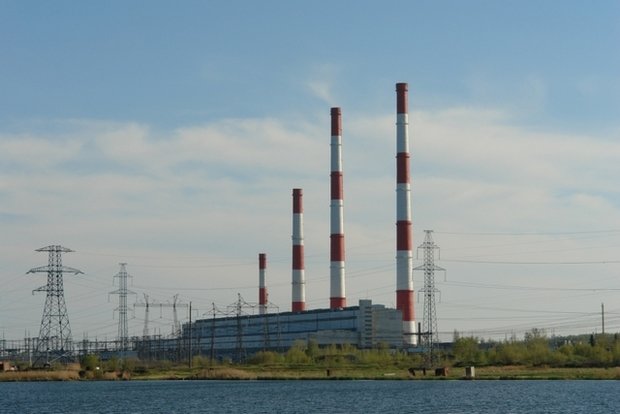
In Tatarstan, the example of Zainsk GRES is illustrative
As far as I understand, there is a similar story with steam turbine plants at existing CHPPs, right?
Yes, initially they were provided for combined generation of thermal and electric energy. Thus, it is impossible to consider modernization within non-combined heat and power generation in principle. To put it simply, if this steam turbine does not have a good heat load, it makes no sense to upgrade it. Otherwise, money will be invested in modernization, but steam turbines will remain uncompetitive in electricity market. Thus, it is absolutely wrong to modernize the existing equipment of CHP without analysis of its actual loading at cogeneration mode! And if possible, the modernization should include the construction of a gas turbine topping with putting out of service inefficient and idle capacities. This is the only way to achieve the effectiveness of modernization.
There is also another aspect of energy modernization. In the energy strategy of the Russian Federation, the outlook of scientific and technical development of the fuel and energy company clearly states current trends. In particular, the development of small, distributed energy, smart electrical networks. In this part, it turns out that the role of big energy is decreasing. From the perspective of the outlook of scientific and technical development, the Russian mechanical engineering complex has quite great prospects in the field of construction of generating capacities. Russia has already started to produce reliable competitive gas turbine units with a capacity of up to 30 MW. This leads to development of distributed energy. It is a different matter that it is necessary to make certain changes in the regulatory documentation on energy and to allow the owners of this independent generation to work not only for their own needs, but also to sell surplus energy in the wholesale or retail markets. This would significantly help to update the generating capacities and, most importantly, to prevent the situation when capacities no one needs fall under the CSA programme.
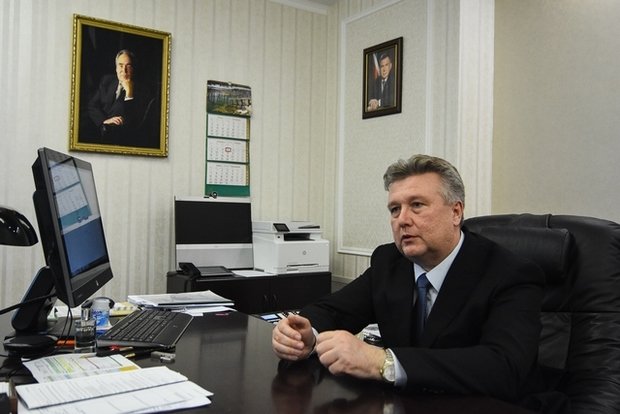
It is no secret that under the first CSA programme, many power facilities were built in those places where they were not actually needed
Under what circumstances can the new programme be effective then?
First, the CSA programme, in principle, should not be considered as the only means against ageing of generating capacities in Russian energy sector. It is just one of the mechanisms. Besides, it is wrong to consider CSA only projecting for the electricity market. The decision on inclusion of a certain power equipment in the second part of the programme should be definitely made on the basis of complex analysis in the presence of thermal loadings. Energy efficiency indicators of the equipment after their modernization should be clearly designated. In principle, the equipment should not be allowed for CSA if after modernization its specific fuel consumption for electricity supply is higher than 300 g/kWh.
Second, we consider the inclusion of the construction of gas turbine toppings in the CSA programme to be a priority in the implementation. After all, in many cases, only the use of combined cycle can significantly improve the efficiency of the station.
Third, mechanisms that allow owners of large industrial enterprises to develop their own distributed generation should be created. And we need to create opportunities for the owners of this generation to make it profitable to sell excess electricity in the wholesale or retail markets.
Only with such a comprehensive approach will we be able to significantly upgrade our generating capacities without increasing the burden on the end user. Unfortunately, we do not see a comprehensive solution at present. The entire big energy has focused on CSA-2. There is a strong consumer reaction. But we hope that in the end, a common position will be found and this will allow us to begin modernizing our capacities on market conditions. Because only such conditions allow to choose the most optimal both technical and economic solution. TGC-16 understands this like no other. Because we work within the industrial group, where there are consumers and producers of electricity. Each of our decisions is weighted in terms of its impact on our company and on the reliability and economy of our consumers.